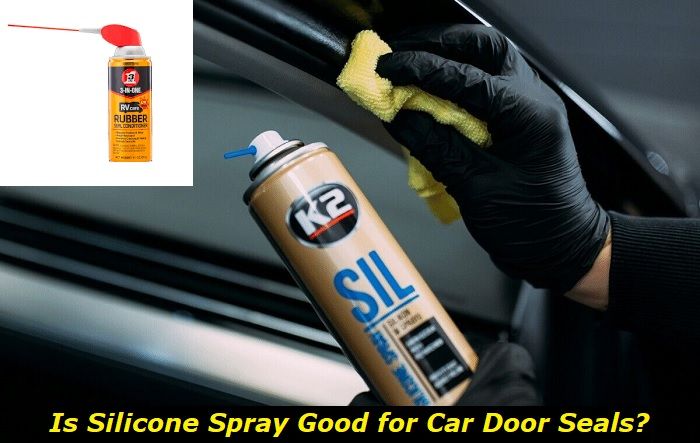Many car owners ask us how long can you leave the engine flush in. While we can give a definite answer, we need to expand the subject for a better understanding
Engine flush additives highlights
- Efficiency:negative or zero
- Availability:limited choice
- Average price: $85
- Way to use:pour instead of engine oil
- DIY use:possible but complicated
- Experts' advice:mixed advice
- Independent testing:may be positive in some cases
- Consequences:cleaned sludge and buildups may clog the engine
.jpg)
What is an Engine Flush? And How Does it Work?
Those people who ask us most likely had their vehicles sitting in the garage for quite some time. If you have spotted some sludge on your exterior, you must have been thinking of flushing your engine to clean it and remove them.
So what do you need to know before flushing your engine?
What is engine flush made of?
An engine flush is a solution composed of chemicals and additives designed to clean contaminants present in your engine. Here are the types of chemicals and substances included in an engine flush (note that this may vary from different manufacturers):
- Detergents
Detergents are substances used for cleaning. They dissolve contaminants and deposits that have built up in the engine.
- Solvents
Solvents carry more breaking power than detergents. It dissolves stubborn contaminants, including sludges.
- Surfactants
Surfactants disperse and deliver the cleaning agents into the engine, so they spread through the engine evenly.
- Anti-wear additives
The anti-wear additives shield the engine components from wear and tear while cleaning.
- Rust inhibitors
Rust inhibitors are substances protecting the engine from accumulating rust and corrosion while cleaning.
Benefits of an engine flush
While an engine flush could potentially damage your engine because of improper use, there are much better uses for an engine flush. A clean engine extends its life. But wrong applications could cause the opposite effects. Here's what you can get.
- Improves engine performance
- New engine oil preparation
- Boosts fuel efficiency
- Reduces heat
- Reduces emission
So if these are the benefits of an engine flush, why are carmakers discouraging them?
How Long Should you Leave the Engine Flush in?
Our recommended maximum time is five minutes. Leaving it for more than five minutes could cause irreversible damage. Remember that it has a strong solution. And looking at its formula, you know it will make no exception when it comes to cleaning action.
Could Engine Flush Damage your Engine?
Yes. It will damage your engine if it sits in there for too long. The longer you leave the solution to your engine. The more it could cause damage to engine parts and components.
Leaving it for more than five minutes could mean up to 15,000 miles of wear. So how does it affect your engine?
- It damages seals and other components
The main reason carmakers discourage the use of engine flush is it can damage engine components. Engine bearings, turbochargers, gasket seals, and other oil-lubricated parts react to the chemicals present in engine flush.
If the vehicle is not compatible with the engine flush, it may cause damages, such as damage from dislodging debris, corrosion, dried-out seals, and premature wearing out of components.
- It restricts the flow of oil
Some products thicken the oil, making it harder to flow. Also, contaminants dislodging from the engine may trap and get in the path of oil. Aside from that, the oil filter could hold much of the trapped dirt, reducing oil flow.
- It causes leaks
Rubber seals get damaged when they touch engine flush, especially if the vehicle is already old. In most cases, these sludges that have dried on the seals serve as a sealant on holes. Using engine flush will dissolve these sludges and reveal the holes and cracked seals, which cause oil leaks.
The Right Way to Flush your Engine
Although engine flush could damage engine parts, you can still prevent it. You only need to know the instructions and the correct way to use them.
Steps to use an engine flush
Here's how you can flush the engine properly.
Pour the engine flush on your oil reservoir. You may drain the oil first.
Let your engine idle for 5 minutes. Doing this will provide enough time to flow into components and dissolve the sludges going through.
Or, you can drive your car, so the flush circulates thoroughly into the engine.
Replace your oil filter and your oil. When flushing out the oil, it will remove the remaining solution and all the gunk left in the engine.
Signs that you've left your engine flush for too long
- Decrease in pressure
If the debris has lodged into oil passages or the solution has thickened, it will restrict the airflow and cause reduced oil pressure.
- Excessive engine noise
When debris is already in the engine, it will start making excessive clanking, knocking, grinding, scraping, or whistling sounds.
- Oil leaks
The worst signs that the engine flush was left for too long are oil leaks. It is possible that it did not only damage the rubber seals but also damaged other components, such as bearings.
What can you do if you've left the engine flush too long?
Here's what you can do if you suspect that you have left the engine flush for too long:
Drain the engine and replace it with oil. Doing this will remove any debris or gunk left on it.
Check your engine. Although it may seem too late, inspect it for possible damages. Do a visual inspection, especially on the seals. You can easily spot this if you've seen oil leaking.
Flush your engine again. Do this if you want to remove all the contaminants.
Call your mechanic. We recommend having a mechanic by your side before pouring any engine flush on your engine. It will help you save time, effort, and possible premature wearing of your engine components. However, if it's too late, call your mechanic. Expect replacements of affected components, such as gaskets, seals, and bearings.
How Often Should You Flush your Engine?
If you change the oil regularly, you don't need an engine flush.
But if you think your vehicle is underperforming, consult your mechanic for possible engine flushing.
If you still prefer to flush your engine, you can perform it every 35,000 to 37,000 miles.
It all depends on your maintenance and driving habits.
Is it necessary to use engine flush?
An engine flush performed accordingly will loosen up deposits, grime, debris, or any form of contaminants in your engine. It should help your engine run like new.
But if your vehicle is old, you may have to skip flushing the engine. If you are trying to clean up your car sitting for a long time, it will. But it will not revive damaged components. Cleaning up old vehicles will reveal which parts have cracked or broken. Your unit will need necessary replacements and repairs.
Should I use engine flush to replace oil maintenance?
An engine flush is not a substitute for your regular oil maintenance. But you can skip engine flush with regular change oil. An engine flush is a solution used for cleaning the engine. It does not solve the problems addressed by regular maintenance.
Do experts recommend using engine flush?
Car makers are discouraging engine flush usage. And some of them even void warranties. On the contrary, automotive experts recommend its use for optimum performance and to bring it back to its youthful state.
How Can You Avoid Using Engine Flush?
- Do not skip your maintenance schedule.
- Use high-quality and recommended engine oil.
- Always drive your vehicle.
- Avoid running your car on short trips.
Things to remember before flushing your engine
- Always refer to your manufacturer's recommendation before flushing your engine.
- Your engine should be at operating temperature before pouring the solution.
- Do not leave the engine flush for over five minutes.
- An engine flush is not an alternative for your regular maintenance.
- Not all engines are suitable for flushing engines.
- Use a compatible engine flush for your vehicle.
- Dispose of oil according to your local rules and regulations.
Should you Use Engine Flush at All?
The usage of engine flush is so controversial. Car manufacturers do not recommend them.
Automotive experts, including the majority of mechanics, recommend it. While you do not have to use it on your regular maintenance, it could be a part of your maintenance schedule. But it doesn't have to take place every change oil.
We recommend performing preventive maintenance on schedule to keep your engine clean and in good condition. However, if you think it is not at its optimum performance, flush the engine. But contact your mechanic before pouring any engine flush. Doing this will help you save future repairs and even prolong your vehicle's engine life.
About the authors
The CarAraC research team is composed of seasoned auto mechanics and automotive industry professionals, including individuals with advanced degrees and certifications in their field. Our team members boast prestigious credentials, reflecting their extensive knowledge and skills. These qualifications include: IMI: Institute of the Motor Industry, ASE-Certified Master Automobile Technicians; Coventry University, Graduate of MA in Automotive Journalism; Politecnico di Torino, Italy, MS Automotive Engineering; Ss. Cyril and Methodius University in Skopje, Mechanical University in Skopje; TOC Automotive College; DHA Suffa University, Department of Mechanical Engineering






Add comment